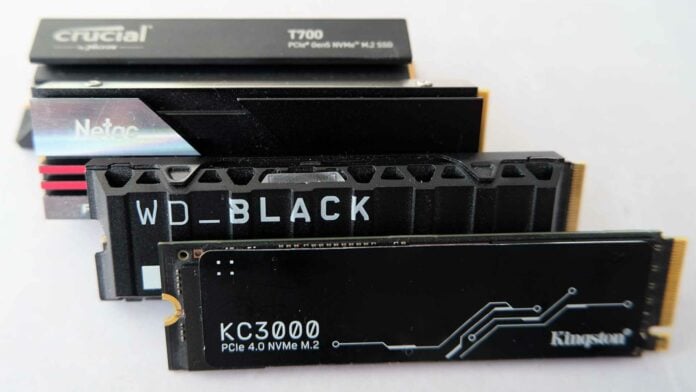Club386 endorses products based on our extensive tests and experience. If you make a purchase using our referral links, we may get a small commission at no extra cost to you.
Not every system needs the best SSD handling storage duties, but every gaming PC definitely needs a solid-state drive. System requirements are increasingly unforgiving, and a regular old hard drive just isn’t going to cut it with modern releases. It’s not surprising, really, considering the PS5 and Xbox Series X/S all pack an NVMe.
The good news is that no game specifies exactly what speed you need. Even the slowest SSD should handle newer titles just fine, from Alan Wake 2 to Starfield. That said, the difference between PCIe 3, 4, and 5 goes beyond their 3,500MB/s, 8,00MB/s, and 14,000MB/s speed caps.
I know what you’re thinking: “The numbers, Mason, what do they mean?” As usual, the higher the figure, the faster the drive is. To the human eye, the differences in load times can be near imperceptible the higher we go. Still, it’s worth getting faster drives. Storage is often the slowest component in your system. If it can’t transfer bits at the same rate as your CPU, GPU, and RAM, it creates a bottleneck that’ll slow your PC to a crawl.
The best hard drives are still fine for playing older games or backing up your data. Looking forward, though, it’s all about picking the best SSD for your budget and making sure it’s compatible with your system.
At a glance
- Samsung 990 Pro – the best SSD
- WD Black SN850X – the best SSD for gaming
- Crucial P3 Plus – a great budget SSD
- MSI Spatium M580 Frozr – fastest SSD
- Seagate FireCuda 530 – the best secondary SSD
- Samsung 870 Evo – the best SATA SSD
- Kingston XS2000 – the best external SSD
The best SSDs
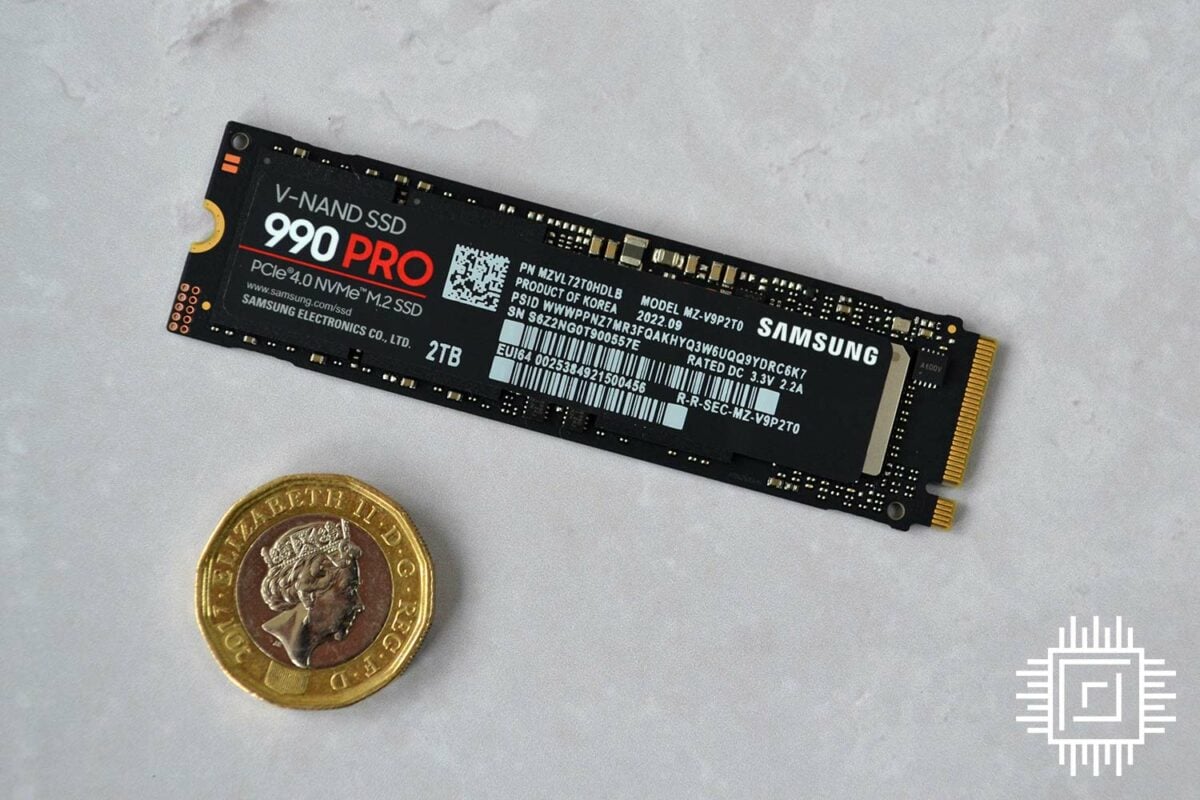
1. Samsung 990 Pro
The best SSD money can buy right now, pound for pound.
| Specs | |
|---|---|
| Capacity | 1TB, 2TB, 4TB |
| Sequential Read Speed | Up to 7,450MB/s |
| Sequential Write Speed | Up to 6,900MB/s |
| Interface | PCIe 4.0 x4 |
| Controller | Samsung in-house Pascal |
| Memory | Samsung V-NAND TLC 7th Gen |
| Endurance | Up to 2,400TBW |
| MSRP | From £91.99 / $129.99 |
Samsung’s decision to stick to PCIe 4.0 with the 990 Pro raised some eyebrows. After all, the rest of the SSD world moved onto Gen 5 when it was released at the end of 2022. This was all part of the strategy, however, keeping prices down, device compatibility high, and pushing the performance of the last-gen standard as far as it’ll go. This is especially important in 2024, as costs begin to rise, and I have good news in that this is one of the only drives not skyrocketing. In fact, it’s gone in the other direction, being cheaper than ever.
It takes the crown from the former 2020 champ, the 980 Pro, fixing many of its performance deficiencies. It’s not a flawless run in our tests, but the 990 Pro grabbed enough gold medals that it might as well be a sweep. Its 7,421MB/s sequential read and 6,825MB/s write speed pull ahead of the competition, getting the most out of the 8,000MB/s and 7,500MB/s ceilings, respectively. Admittedly, it falters a little in random 4K tests but more than makes up for it with real-world gaming. It features the second-fastest load times in Final Fantasy XIV: Endwalker and Battlefield V.
By the time of our review, the drive was only available in 1TB and 2TB models. Fortunately, there’s now a 4TB you can grab if you feel you need more storage space. No matter what you choose, they all work great with the PlayStation 5, as well as gaming PCs. There’s also a swanky heatsink option for the lower-capacity models to keep it running a little cooler. Most motherboard heat spreaders work just fine for PCIe 4.0, but Samsung’s solution certainly looks the part with RGB lighting you can control in the software.
Generally, we prefer most of our devices without software, and you can use the 990 Pro right out of the box. That said, Samsung Magician is the most intuitive software of all SSD providers. You can keep an eye on your drive’s health, manage data via migration or encryption, and benchmark it yourself (although always take first-party figures with a pinch of salt).
Naturally, we’re curious what a flagship consumer PCIe 5.0 SSD from Samsung would look like, but the 990 Pro remains a go-to for performance enthusiasts with great compatibility. Hunting around, prices start at £91.99 / $129.99 for the 1TB version through to £263.99 / $329.99 for the 4TB model. The heatsink tacks on an extra £8.
Read the full Samsung 990 Pro review for our breakdown of the SSD.
Pros
Fantastic performance
Hardware encryption
Good software
Heatsink option
Cons
SLC cache isn’t huge
Buy
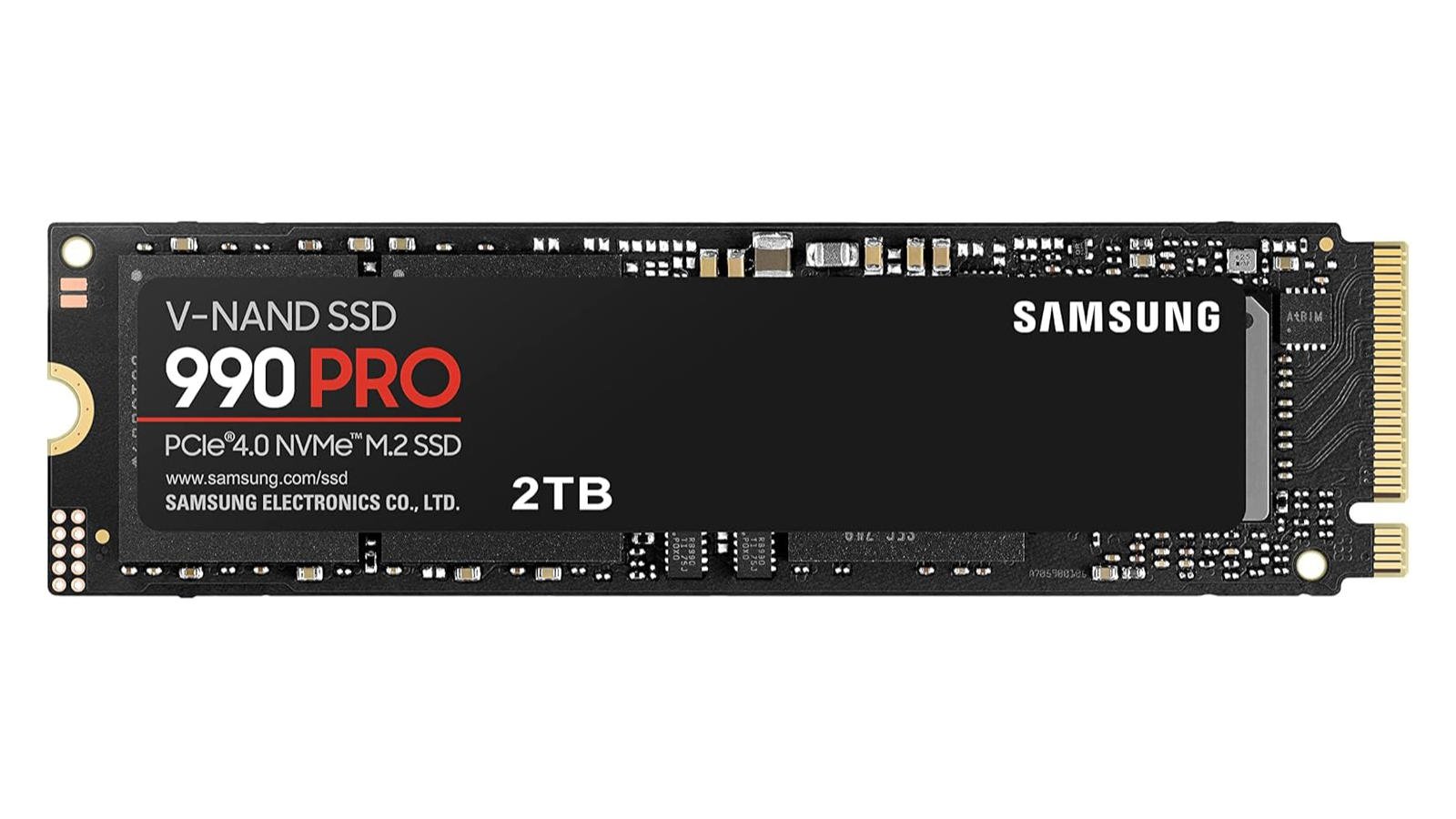
Club386 may earn an affiliate commission when you purchase products through links on our site. This helps keep our content free for all.
Rest assured, our buying advice will forever remain impartial and unbiased.
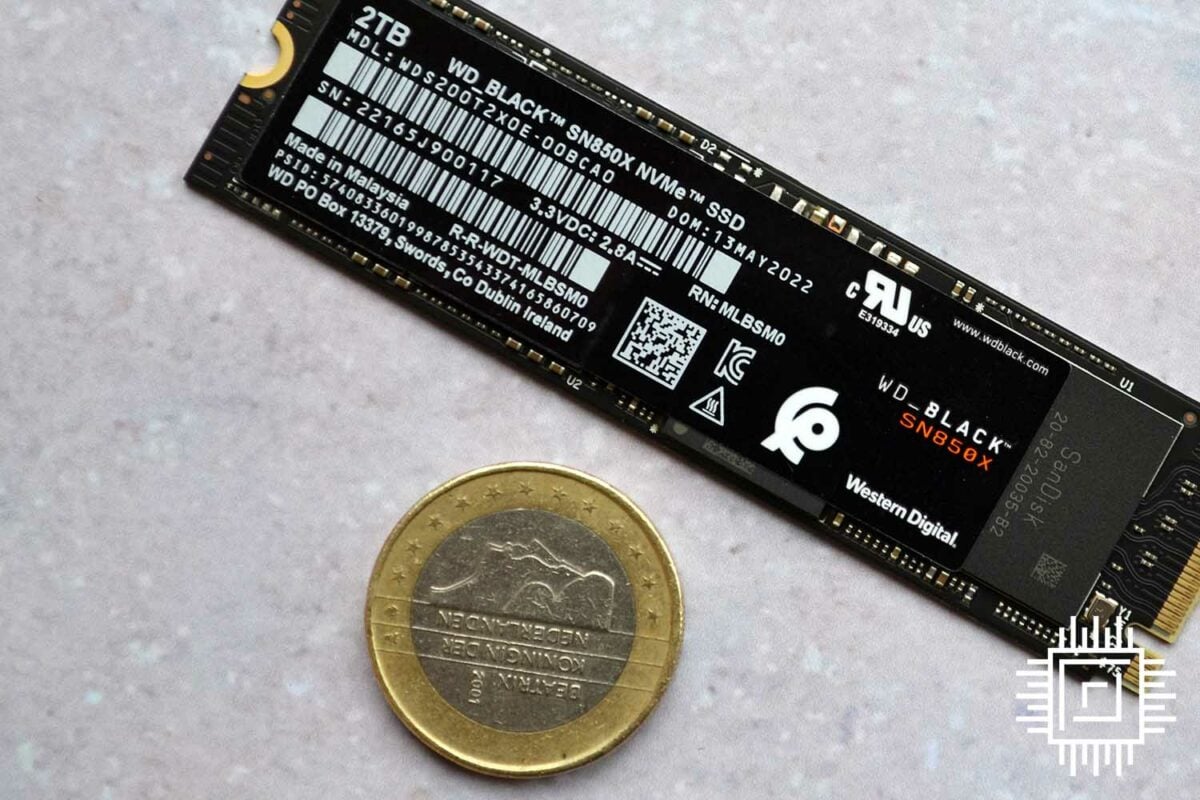
2. WD Black SN850X
The best SSD for gaming.
| Specs | |
|---|---|
| Capacity | 1TB, 2TB, 4TB |
| Sequential Read Speed | Up to 7,300MB/s |
| Sequential Write Speed | Up to 6,600MB/s |
| Interface | PCIe 4.0 x4 |
| Controller | WD Black G2 |
| Memory | SanDisk TLC |
| Endurance | Up to 2,400TBW |
| MSRP | From £100.43 / $109.99 |
The WD Black SN850X is the embodiment of a few sayings. Close, but no cigar. In the ballpark. So close, yet so far. The Samsung 990 Pro outshines it in everyday use, but this upgrade over the SN850 does have some things going for it. First of all, it’s cheaper for a slight drop in performance, according to our tests. Second, it’s ideal for gaming and content creation, with quicker load times than our top pick.
Edging out all the competition, the WD Black SN850X boots every game we tested quicker than its rivals. It’s not by a small margin, either. In part, this is thanks to its Game Mode 2.0 feature, which manages data. It detects when you launch a game and disables lower power states, so your gaming PC is quite literally firing on all cylinders. There’s debate about whether it’s worth it, but the proof is in the pudding (which is the data in this case).
Each model improves upon its non-X predecessors, coming in 1TB, 2TB, and 4TB capacities. From write speed to IOPS and general application performance, it’s almost in a different league from the SN850. You might consider forking extra for the heatsink variant because the SN850X runs on the hotter side. Still, it performs exactly as you’d expect, toasty or not.
It was originally released with an MSRP that would’ve made you think twice, but its current £100.43 / $109.99 starting price should tempt anyone in the market for an upgrade. It might even pack more value than our top pick, especially if you’re sticking this in a gaming PC.
Read our full WD Black SN850X review for a closer look at the drive.
Pros
Impressive performance
Great for gaming
PS5 compatible
Cons
Subpar for workstations
Buy
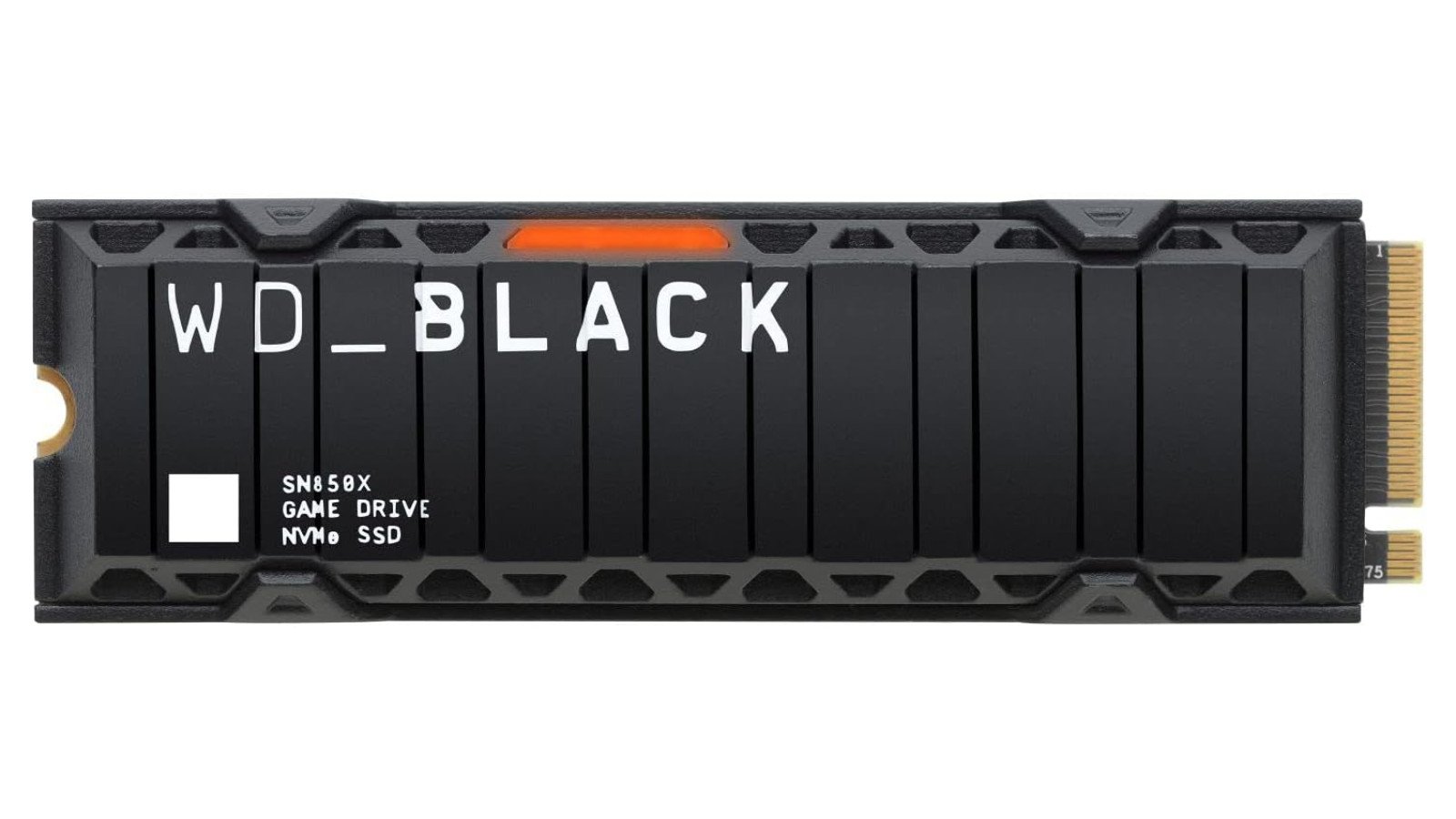
Club386 may earn an affiliate commission when you purchase products through links on our site. This helps keep our content free for all.
Rest assured, our buying advice will forever remain impartial and unbiased.
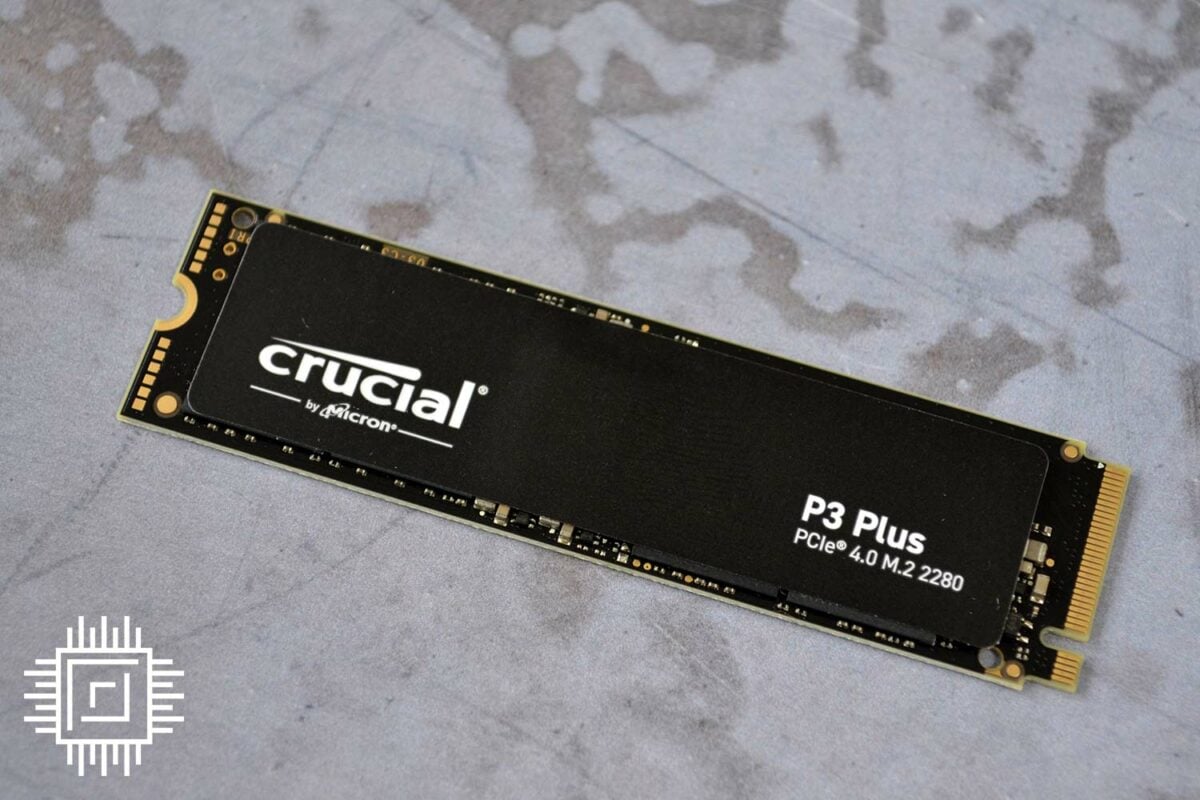
3. Crucial P3 Plus
The best cheap SSD if you’re on a budget.
| Specs | |
|---|---|
| Capacity | 500GB, 1TB, 2TB, 4TB |
| Sequential Read Speed | Up to 4,800MB/s |
| Sequential Write Speed | Up to 4,100MB/s |
| Interface | PCIe 4.0 x4 |
| Controller | Phison PS5021 |
| Memory | Micron 176L QLC |
| Endurance | Up to 800TBW |
| MSRP | From £51 / $52.60 |
Top M.2 SSDs have come down in price over the years, but so have budget NVMe drives. At the sacrifice of performance, the Crucial P3 Plus can save you a pretty penny by halving the cost or giving you double the capacity for the same price.
The ‘Plus’ in its name comes from the jump to PCIe 4.0, increasing its read and write speed. It doesn’t change much over its predecessor, packing the basic Phison controller and 176-layer QLC NAND, but its strength lies in its price tag. This wasn’t always the case, mind you. During our tests last year, the RRP was so eye-watering that we couldn’t recommend it over rivals. Thankfully, that’s no longer the case.
It has more capacities to choose from than our premium options, but we’d recommend dreaming a little bigger where possible. It’s nice that you can get a 500GB model for £51 / $52.60, but it doesn’t perform as well as higher capacities. Besides, M.2 slots are usually a precious resource. Motherboards don’t tend to pack many, and using one sometimes comes at the cost of PCIe bandwidth. As a result, the 1TB from £70.99 / $69.99, 2TB from £114.99 / $117.99, and 4TB from £233.85 / $226.99 are all a little more tempting.
The new, low-cost model is backed up by a five-year warranty should you hit any speedbumps during your time with it. You can’t go wrong with the Crucial P3 Plus, so long as all you expect is an entry-level PCIe 4 SSD.
Read our Crucial P3 Plus review for an overview of how the drive compares to others.
Pros
Five-year warranty
Wide range of capacities
Now very affordable
Buy
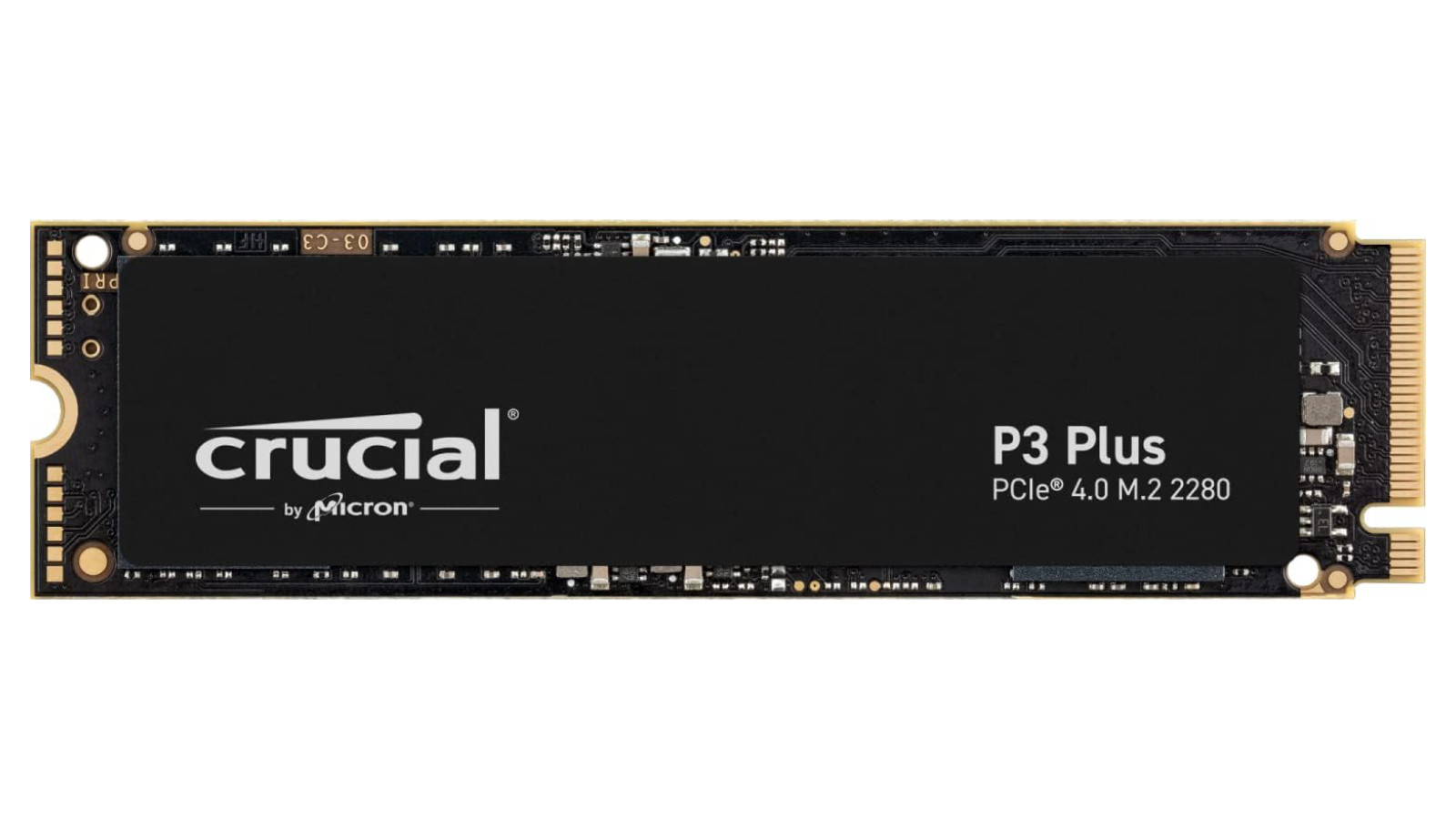
Club386 may earn an affiliate commission when you purchase products through links on our site. This helps keep our content free for all.
Rest assured, our buying advice will forever remain impartial and unbiased.
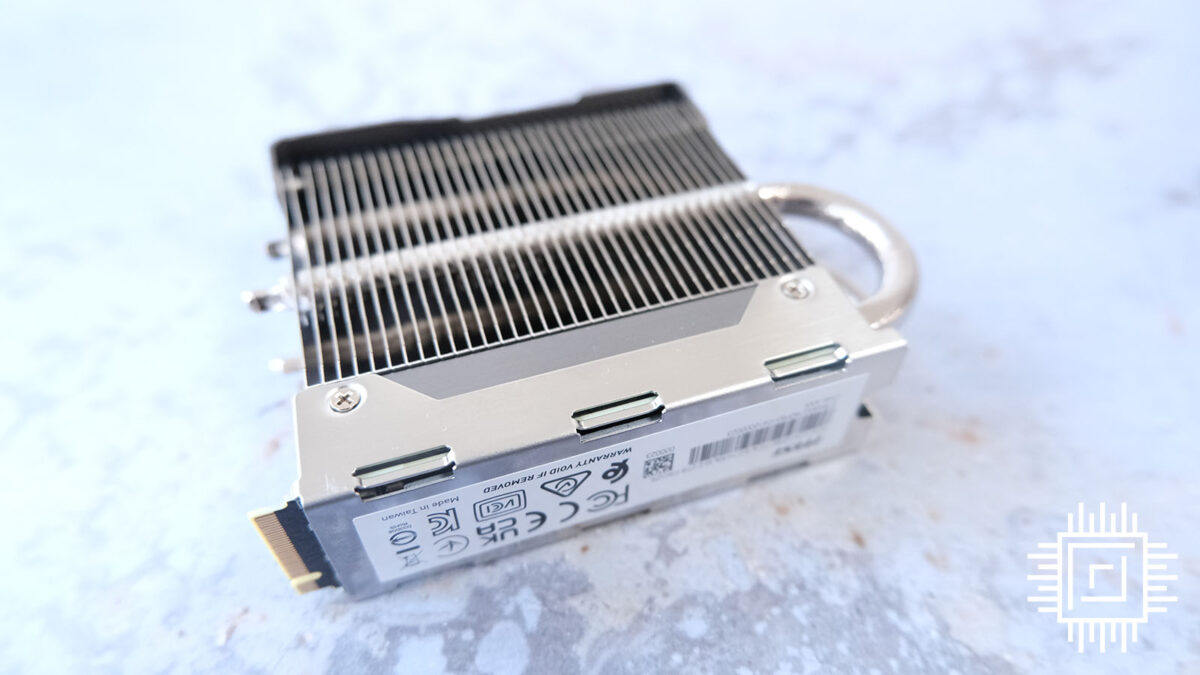
4. MSI Spatium M580 Frozr
The fastest PCIe 5 SSD.
| Specs | |
|---|---|
| Capacity | 1TB, 2TB, 4TB |
| Sequential Read Speed | Up to 14,100MB/s |
| Sequential Write Speed | Up to 12,600MB/s |
| Interface | PCIe 5.0 x4 |
| Controller | Phison E26 |
| Memory | 232L Micron TLC |
| Endurance | Up to 3,000TBW |
| MSRP | From £150 / $150 |
MSI Spatium M580 Frozr is a feat of engineering, outpacing every other SSD on the market. While most brands struggle to make a name for themselves in the bustling PCIe 5.0 x4 crowd, the Taiwanese company does so by simply topping every chart it can. Sure, the real-world benefits are incremental compared to alternatives, but it pays to have the quickest speeds available.
Impressively, the drive exceeds MSI’s speed estimations by a notable margin in our CrystalDiskMark tests. Casually hitting 14,613MB/s sequential read speeds and 12,958MB/s seq. write speeds, that’s a 4% and 3% boost, respectively. Components under the hood are notably premium, powered by a Phison E26 SSD controller and Micron’s 232-Layer 3D TLC flash. Slap a 3,000TB write endurance on top of that, and it doesn’t get much better than this.
As with any component, the faster it gets, the hotter it runs. The M580 is no exception, particularly being a Gen 5 model. To keep it cosy and prevent thermal throttling, it comes with a 36-fin heatsink that saps warmth away via three heatpipes. It’s pretty big for an SSD, but it’s worth the trade-off. Not only is it passive instead of active cooling, keeping the noise down, but it also sports some of the best temperatures we’ve seen at 61°C.
If your motherboard has a PCIe 5.0 M.2 port, this should be at the top of your considerations list. Higher capacities run a premium price tag, but the starting £150 / $150 MSRP for 1TB holds a lot of value. Of course, you can run this on a PCIe 4.0 board, too, but it’ll be hampered by last-gen speeds.
Read our MSI Spatium M580 review to see how the drive stacks up against other SSDs.
Pros
Supremely fast
Excellent cooler
Top-notch NAND
Up to 4TB capacity
Buy
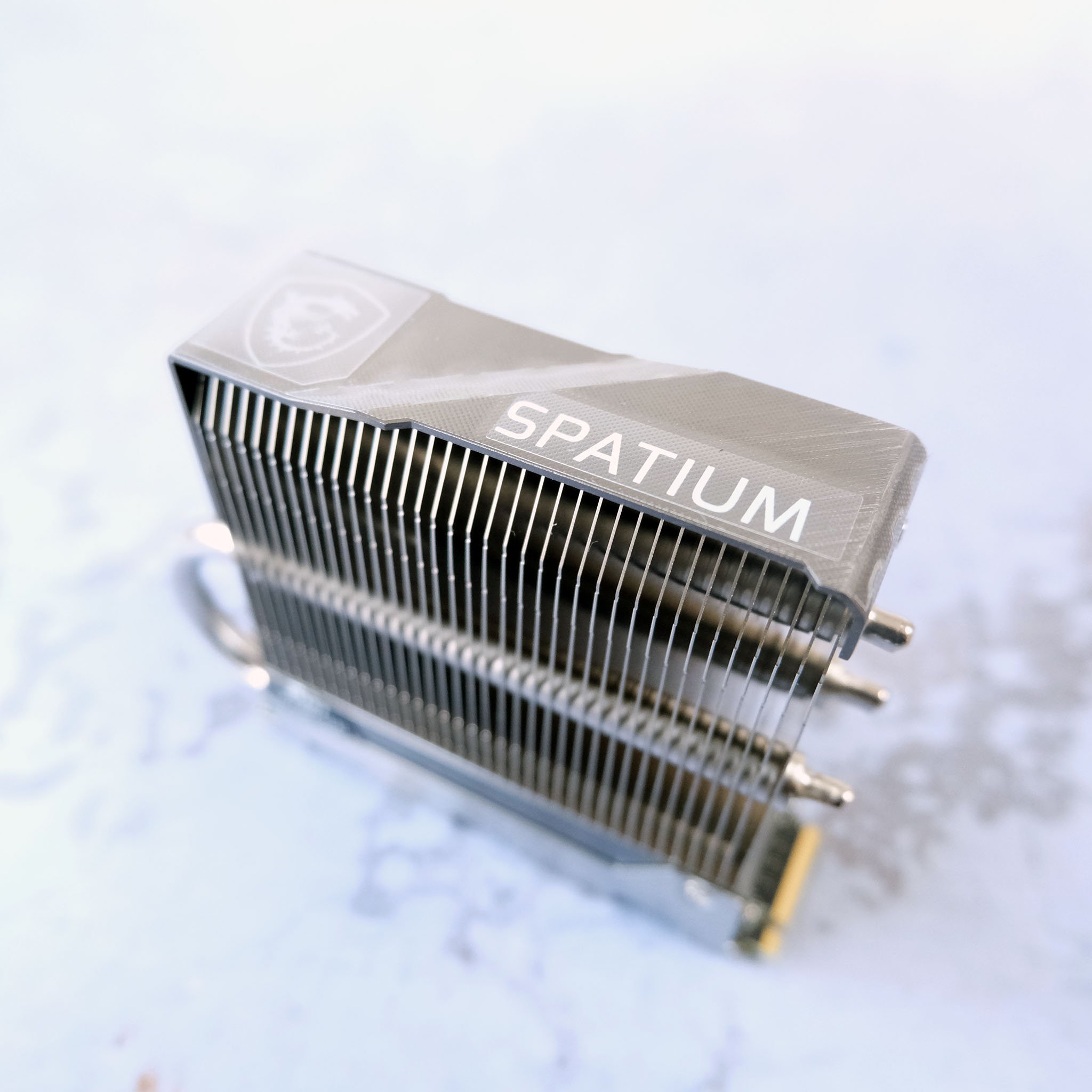
Club386 may earn an affiliate commission when you purchase products through links on our site. This helps keep our content free for all.
Rest assured, our buying advice will forever remain impartial and unbiased.
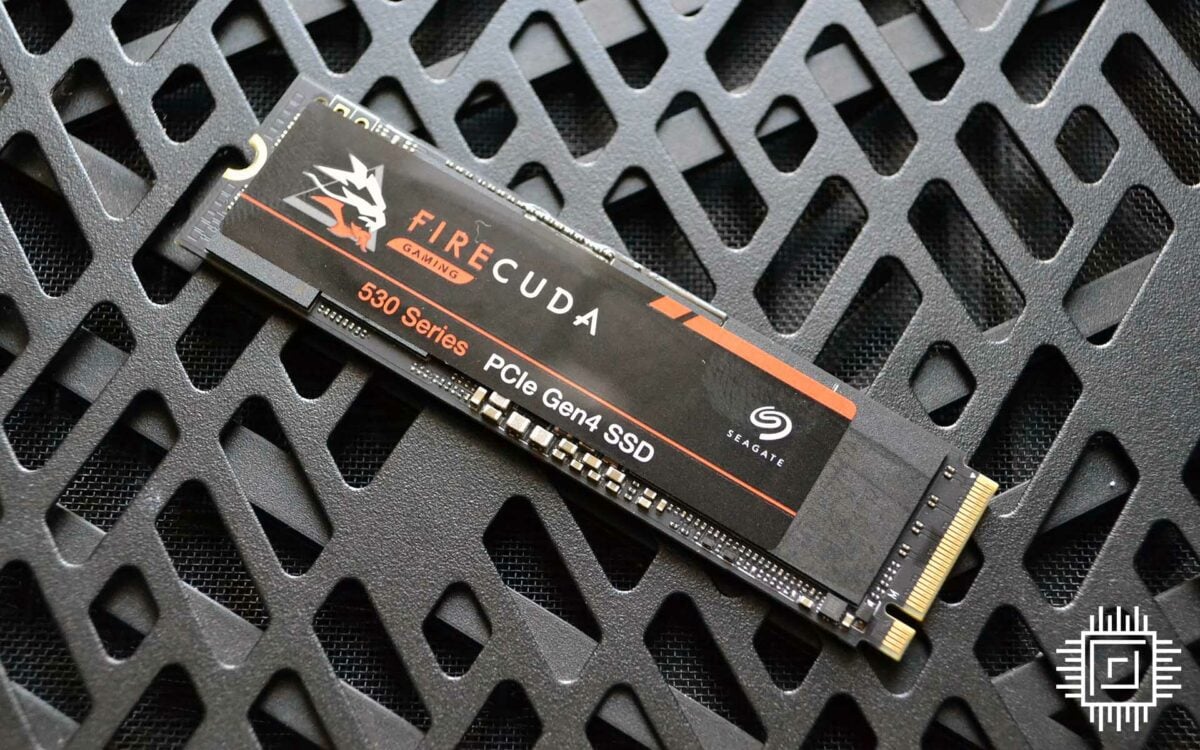
5. Seagate FireCuda 530
The best secondary SSD.
| Specs | |
|---|---|
| Capacity | 500GB, 1TB, 2TB, 4TB |
| Sequential Read Speed | Up to 7,300MB/s |
| Sequential Write Speed | Up to 6,900MB/s |
| Interface | PCIe 4.0 x4 |
| Controller | Phison E18 |
| Memory | Micron 176L TLC |
| Endurance | Up to 5,100TBW |
| MSRP | From £65.99 / $88.75 |
No device on the planet is infallible. Like humans, SSDs can trip, stumble, and fumble the bag. It’s not something we like to think about when it comes to handling our important data, but it’s a very real risk we take. Sure, we encourage you to back up your data, but what if your secondary drive fails right after your primary? You need a good recovery system in place.
Seagate knows this all too well, bundling the FireCuda 530 with three years of Rescue Data Recovery Services. The program has an industry-leading 95 per cent success rate when retrieving lost data on SSDs and hard drives. It’s one of the only M.2 purchases that lets you sigh in relief if it gets damaged or corrupted.
The Seagate FireCuda 530 also has industry-leading endurance. The 500GB option is pretty high for its size at 640TBW, but the 1TB has 1,275TBW, the 2TB has 2,550TBW, and the 4TB has a whopping 5,100TBW. This puts the device as the best secondary SSD you can buy right now, backing up all your files.
Generally, the FireCuda 530 handles itself just fine compared to other PCIe 4.0 SSDs. It’s a little more middle-of-the-pack with speed, but game load times won’t leave you hanging for long. Starting at £39 / $88.75, there’s a metric tonne of value that eases any pain points you might have with this drive.
Check out our Seagate FireCuda 530 review for more information.
Pros
Robust performance
Useful rescue software
Decent pricing
Excellent steady-state
Cons
No encryption
Clunky firmware update
Buy
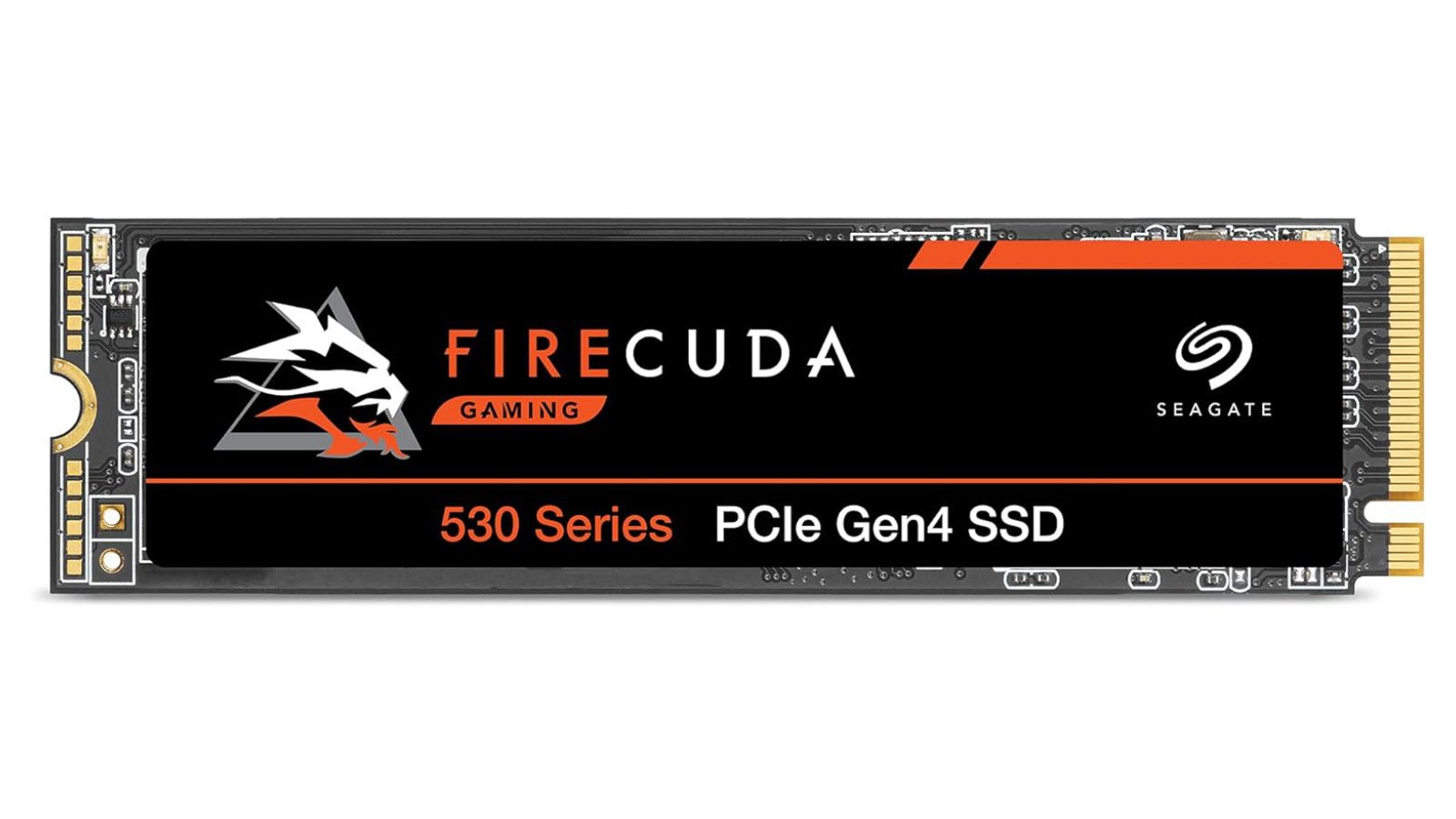
Club386 may earn an affiliate commission when you purchase products through links on our site. This helps keep our content free for all.
Rest assured, our buying advice will forever remain impartial and unbiased.
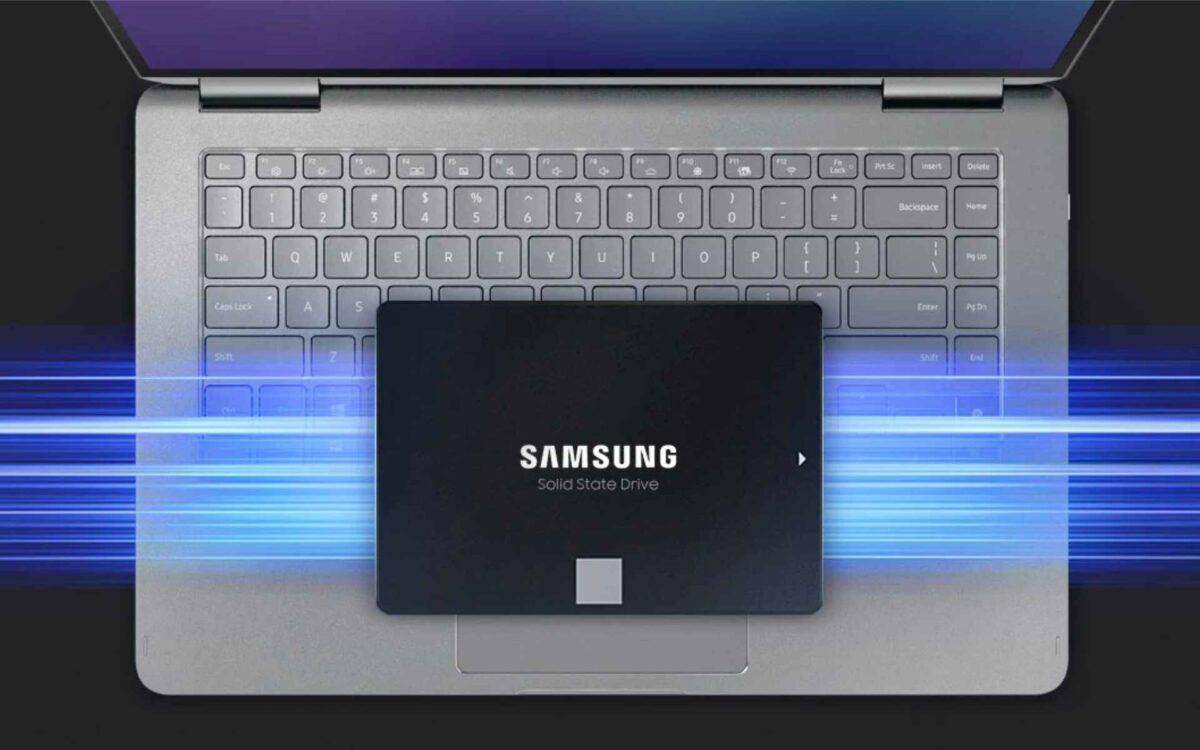
6. Samsung 870 Evo
The best SATA SSD.
| Specs | |
|---|---|
| Capacity | 500GB, 1TB, 2TB, 4TB |
| Sequential Read Speed | Up to 560MB/s |
| Sequential Write Speed | Up to 530MB/s |
| Interface | SATA |
| Controller | Samsung MKX |
| Memory | Samsung 512Gbit 128L 3D TLC |
| Endurance | Up to 2,400TBW |
| MSRP | From £39 / $69.99 (500GB) |
The curtain’s calling for SATA SSDs. What was once the king of cheaper solid-state drives is now outshone by smaller, faster M.2 alternatives occupying a similar budget. There’s still room in your rig for the humble SATA, though. These bulkier 2.5in options might take up more room, but you can plug far more into a motherboard, and they’re still cheaper for price per gigabyte.
We haven’t tested the Samsung 870 Evo, but we can tell it strikes a fantastic balance. It offers more capacity options than any other device on this list, with 250GB, 500GB, 1TB, 2TB, and 4TB models, with prices starting at £30 for the smallest drive. It’s worth noting that 250GB is difficult to find new in the US, leaving the 500GB model to kick things off at $69.99.
By their very nature, SATA drives aren’t as fast as M.2s – both internal and external. Samsung rates the 870 at up to 560MB/s read speeds and slightly less than this for write speeds. This isn’t ideal for gaming in 2024, but it’ll do the trick if you’ve run out of space elsewhere. Otherwise, it’s more for backing up precious files.
Samsung prides the device on a 2,400TBW endurance for the largest capacity. This is backed by a five-year guarantee, and you can use Magician software to check the device’s health. If you can go for an NVMe, we’d recommend it. If you can’t, there are few SATA SSDs better than the Samsung 870 Evo.
Pros
Long write endurance
Fairly cheap
Lots of capacities available
Cons
4TB price isn’t great
SATA is much slower
Buy
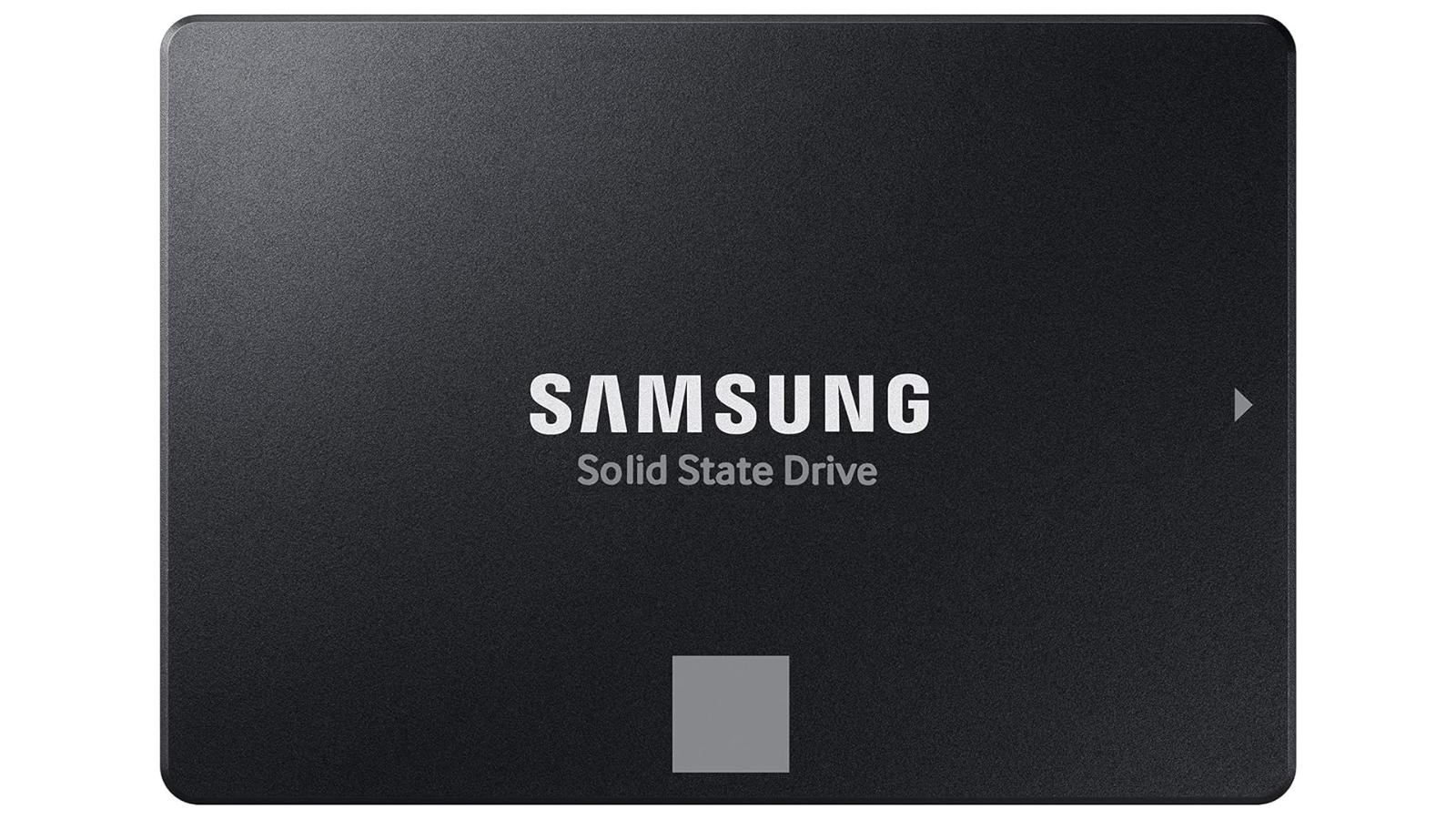
Club386 may earn an affiliate commission when you purchase products through links on our site. This helps keep our content free for all.
Rest assured, our buying advice will forever remain impartial and unbiased.
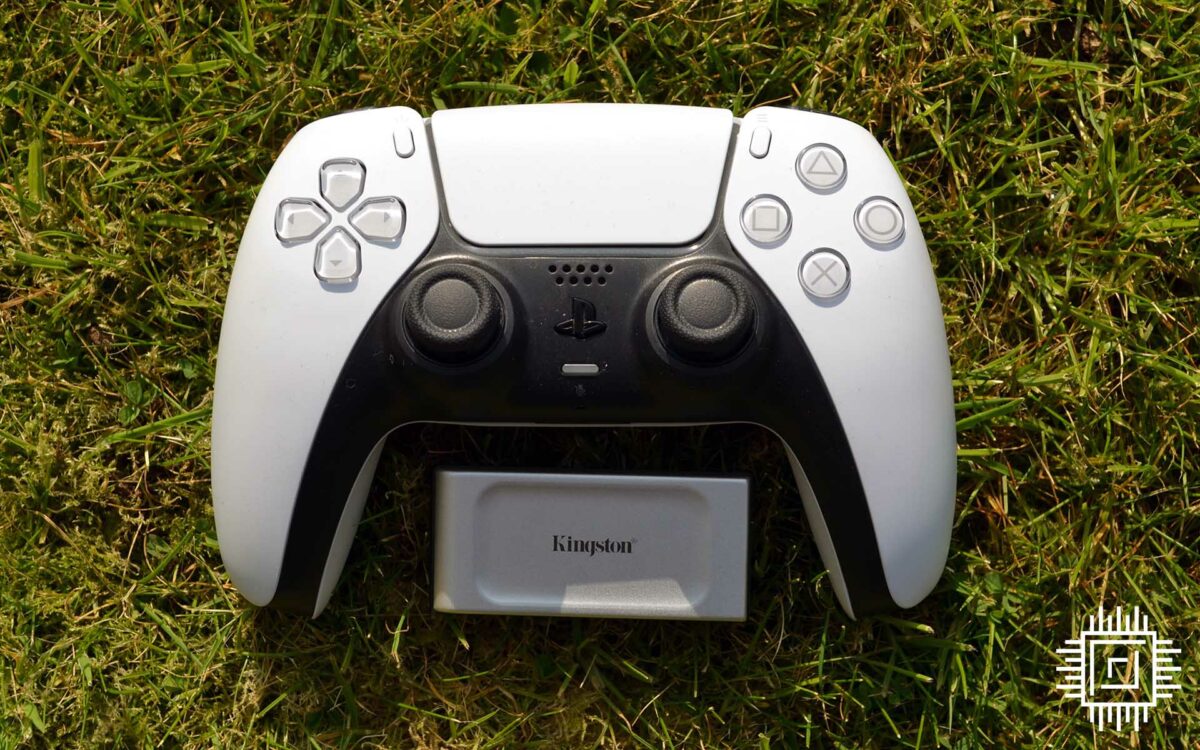
7. Kingston XS2000
The best portable SSD to take on the go.
| Specs | |
|---|---|
| Capacity | 500GB, 1TB, 2TB, 4TB |
| Sequential Read Speed | Up to 2,000MB/s |
| Sequential Write Speed | Up to 2,000MB/s |
| Interface | USB 3.2 Gen 2 2×2 |
| Controller | Silicon Motion SM2320 |
| Memory | Micron 96L TLC |
| Endurance | IP55 water-dust resistant |
| MSRP | From £72 / $77 |
Sometimes, you need to take your storage with you into the big, scary world. That’s where the best portable SSD comes in, and few impressed us as much as the Kingston XS2000. Not only is it the fastest USB solution we’ve tested, it should work with just about any gaming laptop.
Portable SSDs are understandably slower than their internal counterparts. Several brands now look towards Thunderbolt 4 and USB 4 connections to bridge the gap, but that leaves most devices behind. Even if you can plug a USB 4 cable into your portable SSD, it’ll only be as fast as the ports on your system. The Kingston XS2000 sticks with a somewhat more accessible 20Gbps USB 3.2 Gen 2 2×2 interface.
In our tests, the Kingston XS2000 has the fastest sequential read speeds and transfers a 67GB folder quicker than its competitors. It’s worth keeping your expectations in line, given we’re talking no more than 2,000MB/s read and write speed, but it’s still fine for PC gaming. We mention PC gaming specifically because consoles don’t have a 20Gbps port, meaning it’s not ideal for PS5 and Xbox Series X/S.
It comes in 500GB, 1TB, 2TB, and 4TB options starting from £72 / $77. Don’t worry; the size of the enclosure stays the same no matter what you choose, keeping it not much larger than a packet of gum.
Check out our Kingston XS2000 review to see more of this dinky device.
Pros
Truly pocketable
Fast speeds
Attractive pricing
Looks great
Cons
Limited to 20Gbps devices
Buy
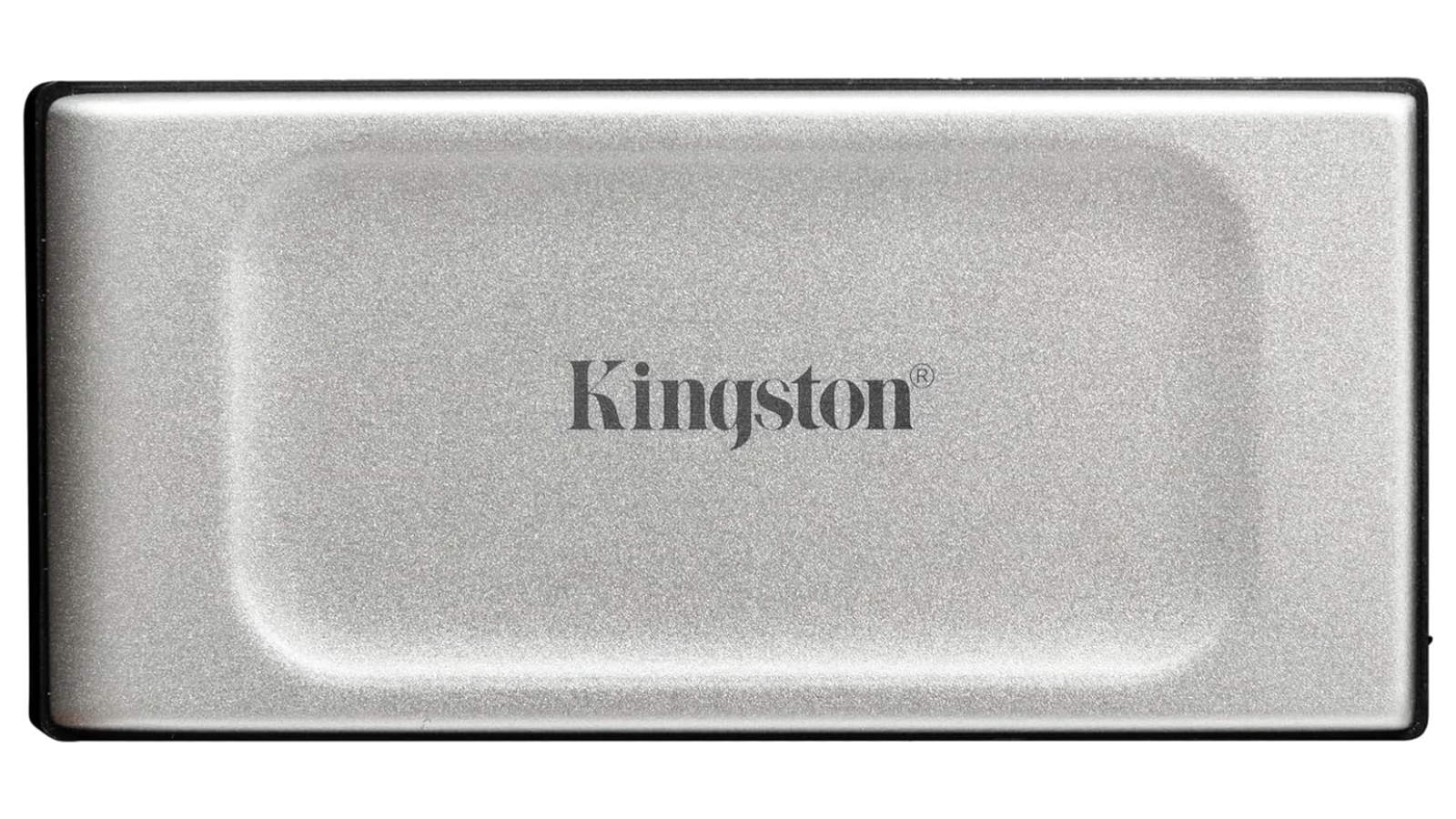
Club386 may earn an affiliate commission when you purchase products through links on our site. This helps keep our content free for all.
Rest assured, our buying advice will forever remain impartial and unbiased.
SSD FAQ
What’s the difference between an SSD and a hard drive?
A hard disc drive (HDD) houses digital information on rapidly rotating platters, accessing it using a moving mechanical arm. It’s a little like a record player in this respect and you might hear the whirring of the disc. A solid-state drive (SSD) uses flash memory with no moving parts, making it much smaller, quieter, and faster. There are several different types of SSD, from cost-effective 2.5-inch models that use a SATA connection to slimmer M.2 variants that vary between SATA and NVMe.
What’s the difference between SATA, M.2, and NVMe SSDs?
Both SATA and NVMe are connection types. Serial Advanced Technology Attachment (SATA) is an older standard that uses a motherboard’s SATA bus. SATA III is the latest version with a 600MB/s throughput ceiling. Non-Volatile Memory Express (NVMe) instead uses the PCIe bus, which continually improves with each passing generation. We’re slowly moving onto PCIe 5.0, which has a substantially larger 14,000MB/s throughput limit. M.2 is a form factor, much like 2.5in and 3.5in. SATA comes in all forms, but NVMe is currently much more common than M.2.
Can I put a PCIe 4.0 SSD in a PCIe 3.0 slot?
Yes, generations of PCIe are backward and forward-compatible since they share the same connection type. Your SSD will only be as fast as the slowest part of the chain, however. If you plug a PCIe 4.0 drive into a PCIe 3.0 slot, you’ll be subjected to the previous generation’s upper limits. The same happens when you use a PCIe 3.0 drive in a PCIe 4.0 slot.
Is an NVMe SSD better for gaming?
Since NVMe offers faster speeds than any other connection type, it’s the best you’ll get for gaming. You’ll spend less time on the loading screen and more time playing. You do get fewer NVMe slots on a motherboard, however, and it’s more expensive. Storing more games requires more storage space, making SATA more cost-effective. It also features diminishing returns. It’s easy to see when someone is still running a hard drive as they’re the last to load into the lobby, but you’ll be hard-pressed to tell who’s using a 2.5in SATA or NVMe drive.
